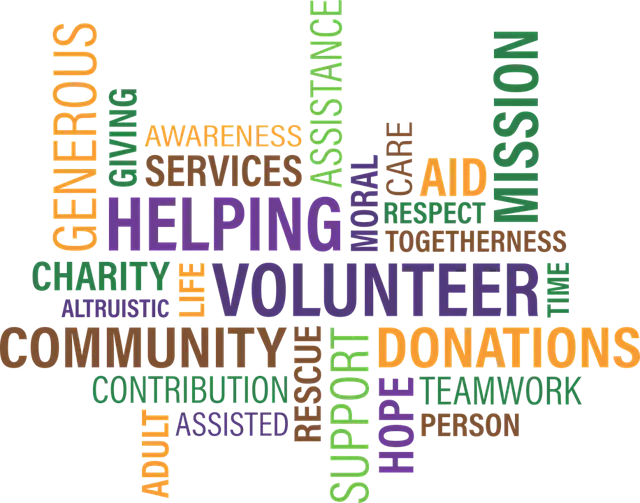Checking Out the Diverse Features and Duties of a Nonprofit Firm in Resolving Social Issues and Promoting Modification
Not-for-profit agencies work as essential representatives of adjustment within society, dealing with a myriad of social concerns with diverse techniques. Their duties prolong past plain service stipulation; they participate in campaigning for, source mobilization, and area outreach, commonly serving as a bridge in between necessary solutions and marginalized populaces. By promoting collaborations and utilizing culturally appropriate strategies, these organizations resolve the source of social obstacles. Yet, the complexities of their roles increase essential inquiries concerning effectiveness and sustainability. What are the effects of these varied functions on long-term area impact?
Recognizing Nonprofit Firm Functions
The efficiency of nonprofit companies depends upon a clear understanding of their diverse roles within culture. These organizations act as critical intermediaries between the general public, personal, and governmental industries, addressing various social problems and promoting for change. Nonprofit agencies often operate as provider, supplying essential programs and resources to underserved populations. This function is important in filling up spaces that may exist in civil services, guaranteeing that vulnerable groups have accessibility to needed assistance.
Furthermore, nonprofits play a necessary role in campaigning for, increasing recognition and affecting plan decisions that impact their areas. By involving in study and public education, these organizations help shape public discussion and advertise educated decision-making - nonprofit agency. They also act as platforms for volunteerism, activating community participants to add their time and abilities toward collective objectives
Moreover, not-for-profit firms frequently work as conveners, uniting varied stakeholders to foster partnership and collective influence. This collaborative method boosts their capacity to resolve complex social problems efficiently. Understanding these diverse duties is crucial for making the most of the potential of nonprofit agencies in producing lasting social modification and improving total community health.
Community Involvement and Outreach
Efficient community interaction and outreach are fundamental elements of not-for-profit agencies' strategies to foster connections and build depend on within the areas they serve. These efforts concentrate on comprehending community needs, promoting understanding of available resources, and encouraging involvement in programs made to resolve social problems. Nonprofit companies employ a variety of methods to engage with community participants, such as workshops, educational sessions, and collective events.
Outreach initiatives serve to reinforce connections with diverse populaces, particularly marginalized teams who might face barriers to accessibility. By using culturally appropriate communication techniques and leveraging neighborhood collaborations, nonprofits can enhance their exposure and demonstrate their commitment to community empowerment. This strategy not just cultivates a sense of belonging however likewise raises the chance of continual interaction.
Additionally, efficient neighborhood interaction surpasses simple engagement; it involves proactively paying attention to area participants' responses and including their understandings into program growth. This collaborative process ensures that the services supplied are responsive, relevant, and customized to the one-of-a-kind challenges encountered by the community. Ultimately, fostering strong connections via involvement and outreach can lead to even more impactful interventions and a better collective initiative towards advertising favorable social adjustment.
Campaigning For and Plan Influence
Campaigning for serves as a crucial system for not-for-profit firms to affect public policy and drive systemic adjustment. By leveraging their experience and area insights, these organizations can efficiently stand for marginalized populations and address pushing social issues. Nonprofits participate in advocacy via numerous methods, including public awareness projects, grassroots mobilization, coalition structure, and direct lobbying of policymakers.
Via these initiatives, not-for-profit companies intend to shape regulation and plan structures that align with their objective and the needs of the areas they offer. They perform research, gather data, and share compelling narratives to highlight the urgency of particular concerns, making click here for more info certain that decision-makers are notified and inspired to act. This process not only magnifies the voices of those influenced by social injustices yet additionally cultivates an extra fair and comprehensive policymaking environment.
Furthermore, campaigning for initiatives typically seek to create long-term structural adjustments, dealing with origin instead than merely easing symptoms. By prioritizing policy impact, nonprofit agencies add to a more comprehensive understanding of social challenges and promote services that can lead to lasting renovations in societal wellness. Inevitably, advocacy is essential to the find here transformative role nonprofits play in creating a just and fair society.
Fundraising and Source Management
Nonprofit firms depend on robust fundraising and resource monitoring techniques to support their advocacy initiatives and maintain their missions. By utilizing a multi-faceted method, nonprofits can alleviate the risks connected with dependence on a single funding resource.
Resource administration is just as critical, as it includes the tactical appropriation of both financial and human resources to take full advantage of impact. Nonprofits have to create spending plans that align with their goals while ensuring transparency and accountability to stakeholders. This involves normal surveillance of expenses and adjusting strategies as required to enhance resource use.

Collaboration and Partnerships
While many organizations seek their goals separately, collaboration and collaborations can significantly boost the performance of nonprofit companies. By functioning together with other nonprofits, government entities, and private industry organizations, nonprofits can pool resources, share experience, and intensify their influence on social problems. Collaborative efforts usually lead to innovative services that may not be attainable separately, leveraging the toughness of each partner to resolve complicated obstacles.

Inevitably, efficient partnership requires clear interaction, shared objectives, and common respect among partners. By accepting a participating strategy, nonprofit companies can create sustainable networks that not just address instant Learn More social concerns however additionally add to long-term systemic adjustment, promoting an extra fair culture. Via collaboration, nonprofits can prosper and optimize their possibility for significant effect.
Verdict
Nonprofit agencies act as vital entities in fostering and addressing social issues change within communities. With diverse functions such as neighborhood campaigning for, engagement, and resource management, these organizations effectively set in motion resources and assistance for underserved populations. Their joint initiatives with various stakeholders improve the ability to affect public policy and advertise architectural modifications. Ultimately, the diverse roles of not-for-profit companies considerably contribute to the search of social justice and the renovation of neighborhood wellness.
Comprehending these multifaceted roles is vital for making best use of the possibility of not-for-profit firms in creating lasting social adjustment and enhancing general community well-being.
Effective area engagement and outreach are basic components of not-for-profit agencies' approaches to develop and foster connections depend on within the neighborhoods they offer. By working with each other with various other nonprofits, government entities, and exclusive market companies, nonprofits can merge sources, share experience, and amplify their influence on social problems.Not-for-profit firms offer as vital entities in fostering and attending to social concerns change within areas - nonprofit agency. Inevitably, the multifaceted roles of nonprofit firms dramatically contribute to the search of social justice and the improvement of neighborhood well-being